Pavilions at Notion
visitor facilities design
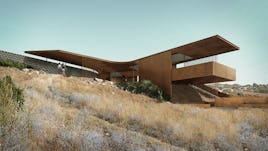
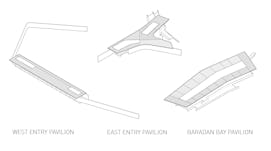
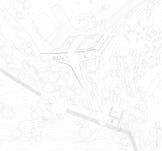
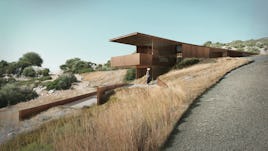
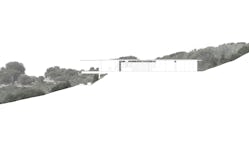
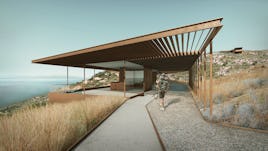
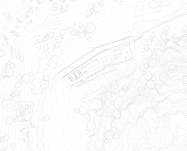
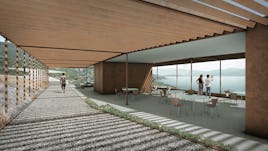
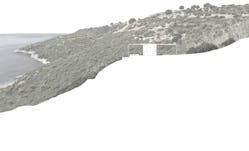
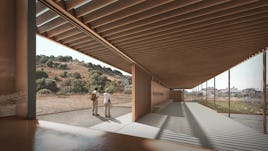
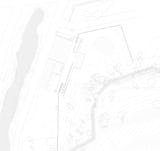
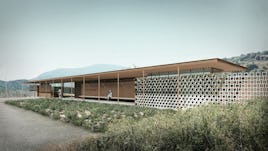
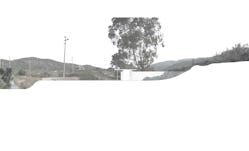
As part of the Notion Archeological Ecological Park, three pavilions are designed to produce a series of thresholds and gateways, housing information services and visitor facilities. Each is conceived as a lightweight framework that thickens the perimeter, staging encounters within the park.
EAST ENTRY PAVILION
The East Entry Pavilion offers a dramatic moment of arrival at the primary visitor access point to the site. Here there is accessible entry to the plateau of the of the ancient city, where the site slopes rapidly to the water. The pavilion creates a threshold at the access road, its geometry articulating the crossing of the entry path with the security threshold. The east end of the pavilion cantilevers over the landscape to overlook the bay. Below the cantilever, terraces are built into the ground to provide areas of rest for visitors and cafe seating, The walls and roof are constructed as a lightweight lattice of self-weathering steel, with the roof being primarily a shade canopy structure with solid areas only above the enclosed program zones. As at the West Entry, the CMU block screen walls create the security barrier at the site entrance. The visitor path continues to a ramped entry to the current access break in the ancient fortification wall, staging excursions into the park.
BARADAN BAY PAVILION
At the east end of the site is Baradan Bay, a picturesque cove popular as a swimming spot with local tourist boats. The Notion site is located along regional cycling and hiking routes and networks, and the site design aims to respond to and produce value for these publics. A third pavilion is planned here in order to accommodate local recreation and ecological tourism growing in the region to stage various form of access to the site. Outside of the secure archaeological zone, this pavilion houses a more substantial open air restaurant with a lower terrace overlooking the bay. It will also accommodate bicycle rental, a small cafe, and restroom facilities. It shares a material palette and architectural strategy with the other two pavilions, conceived of as a large weathering steel shade canopy under which modest programs are arranged as islands. The structure gathers into its edges pedestrian and cycling pathways producing an additional threshold of arrival to the park.
WEST ENTRY PAVILION
Due to the extensiveness of the site, two visitor entry access points are planned at each end. The West Entry Pavilion marks the entry to the site at the corner of the beach highway and the Hales River, just north of the ancient Port Gate. Located at the base of a rugged climb to the top of the hill, it is designed as a thickened threshold with an expansive shade canopy, where layers of walls and screens extend the simple program of guard/ticket booth, souvenir stand, and restroom facilities to capture the corner of the site and achieve presence from the road. The pavilion is constructed of self-weathering steel, complimenting the tone and materiality of the site while minimizing long-term maintenance. The site enclosure at the pavilion is formed by a masonry wall, constructed of generic CMU blocks laid on their sides and parametrically rotated to produce patterns of density and porosity in order to achieve material articulation with modest means and local construction techniques.
The West Entry Pavilion will be the primary point of entry to the western slopes of the park for archeological survey team members and researchers staging site visits from the Notion Excavation House
| Typology | Cultural Facilities Design |
| 2018-2019 |
Team
| RVTR | Kathy Velikov, Geoffrey Thün, Adam Scheuler, Salvador Lindquist, Dan Tish |